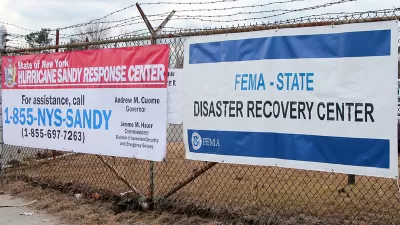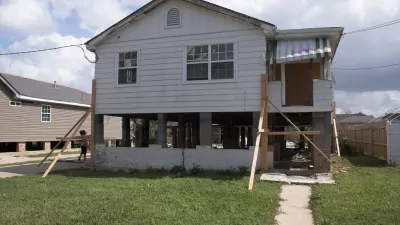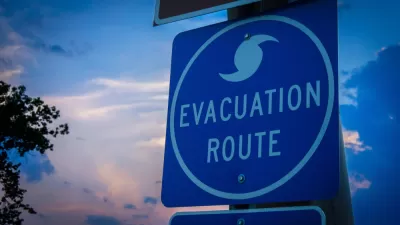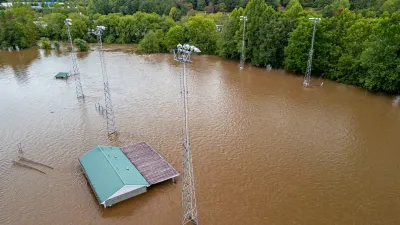Be Prepared! It's more than a motto: it's how we must respond to continuing large-scale natural disasters.

The nation just experienced a prolonged winter that wreaked havoc on fragile infrastructure in the Midwest and Northeast. Meanwhile, California is bracing for an epic draught. This spring, the heavy snows will melt, imperiling communities along the Mississippi-Missouri River basins. These severe weather changes are more frequent and, increasingly, more deadly. Importantly, these are no longer 100-year events. While expert disagree on all of the causes, they all agree that there will be more large deadly disasters because we are not prepared.
An immediate challenge for the president and Congress is to prevent unnecessary budget outlays for the almost certain, forthcoming natural disasters on the magnitude of Hurricane Sandy or larger. Sandy’s physical, psychological, and social impacts will be felt for years, but before the recovery is even fully underway, there will surely be other natural disasters.
We have to understand, as New York Governor Andrew Cuomo said, “the 100-year flood is now every two years.” Because natural disasters will continue to occur with a greater ferocity and with even more severe impacts, we need a national disaster agency. The Federal Emergency Management Agency (FEMA), designed to respond to small, infrequent disasters, is ill suited to deal with large, repeated disasters. So what should this new organization look like?
Thinking Beyond Disaster Relief to Investment in Resilience
Although rising sea levels and extreme storm events are a threat to our national security, the nation must move beyond disaster relief to a proactive policy that invests in resilience. Rather than focus narrowly on data compilation through the National Oceanic and Atmospheric Administration or disaster relief through the FEMA, a policy of investment in community resilience must focus on the link between a resilient future and housing and urban development. President Obama recognized this link by putting Shaun Donovan, the secretary for Housing and Urban Development (HUD), in charge of coordinating the federal response to Sandy, thus transitioning from the Sandy Task Force to the resiliency effort within HUD.
But to address the needs of the future, we need a new resilience investment agency at the federal level with broad authority to forge a link between urban and coastal preservation, that incorporates and coordinates programs throughout the federal government, and that provides significant, dedicated funds to states for their resiliency programs.
Secretary Donovan could design a new agency based on the HUD Sandy concept—a "National Resilience Investment Agency" comprised of some of the existing federal government programs that are already working well within the post-Sandy Task Force framework. This approach won't require a new bureaucracy. Instead, a National Resilience Investment Agency could be achieved through the reorganization and amalgamation of existing agencies in the same way the Environmental Protection Agency was formed. The required reorganization could be formed within an existing department of HUD, or the president could utilize the framework of existing legislation such as the Coastal Zone Management Act. The newly proposed agency would:
1. Integrate into the current federal system of Federal Regions. In each region, the new agency’s regional administrator would establish a federal team to work with state counterpart agencies to develop a long-range hazard reduction, adaptation, and resilience program for states and localities;
2. Establish an integrated federal and state coastal protection system to develop a network of coastal barriers as well as strategically reconfigure poorly planned and situated public and private assets;
3. Provide technical assistance through the current network of specialists to increase resilience for coastal communities through the grants to harden public infrastructure in collaboration with the departments of Transportation, Commerce, Interior, and Agriculture, as well as the Army Corp of Engineers;
4. Prepare plans with the departments of Agriculture and Defense, as well as other agencies for food and water security, and combine the new plans with nationally integrated evacuation plans;
5. Work with the Department of Energy to reduce vulnerabilities in residential areas by developing resiliency in energy delivery systems;
6. Provide skilled rebuilding teams, with engineering and city planning skills in each HUD region, to invest in resiliency, rather than repair in post-disaster scenarios, to incorporate community and economic development while reducing future risks;
7. Work with organized labor and private sector business partners in insurance, finance, real estate, shipping, energy, and communications.
How Do We Pay for Resiliency Investments?
Either we invest now or waste valuable resources in disaster relief in the future. One option for investment might be to create a dedicated resiliency investment fund with revenues derived from an insurance surcharge. Such a national risk insurance fund would generate revenue through an insurance surcharge on every commercial and residential property insurance policy as a percentage of the policy. Federal flood insurance policies are already risk-adjusted under the new Biggert-Waters Act (BW-12). Such an approach would then take into consideration not only location risks but also community, regional, and national risks. A pool of funds created from all home and property insurance as a small additional catastrophe premium could be managed by a single federal lead agency for the purpose of both disaster relief and resiliency investment. Congress might be required to appropriate more funds to the new agency in the event of another Sandy or Katrina or to increase funding for resiliency investment, but a single lead federal agency working with corresponding lead state agencies would be a more efficient and cost effective project administrator of such funds.
Let’s not wait for the next Sandy. If Governor Cuomo’s dictum has merit, we’d better get prepared—because we may only have a New York minute!
Edward J Blakely is honorary professor of urban policy at the United States Studies Centre at the University of Sydney. He is author of My Storm: Recovering New Orleans in the Wake of Katrina, based on his stint as director of recovery in New Orleans from 2007-2009. He is also a board member of the New York Regional Plan Association.

Planetizen Federal Action Tracker
A weekly monitor of how Trump’s orders and actions are impacting planners and planning in America.

Map: Where Senate Republicans Want to Sell Your Public Lands
For public land advocates, the Senate Republicans’ proposal to sell millions of acres of public land in the West is “the biggest fight of their careers.”

Restaurant Patios Were a Pandemic Win — Why Were They so Hard to Keep?
Social distancing requirements and changes in travel patterns prompted cities to pilot new uses for street and sidewalk space. Then it got complicated.

Platform Pilsner: Vancouver Transit Agency Releases... a Beer?
TransLink will receive a portion of every sale of the four-pack.

Toronto Weighs Cheaper Transit, Parking Hikes for Major Events
Special event rates would take effect during large festivals, sports games and concerts to ‘discourage driving, manage congestion and free up space for transit.”

Berlin to Consider Car-Free Zone Larger Than Manhattan
The area bound by the 22-mile Ringbahn would still allow 12 uses of a private automobile per year per person, and several other exemptions.
Urban Design for Planners 1: Software Tools
This six-course series explores essential urban design concepts using open source software and equips planners with the tools they need to participate fully in the urban design process.
Planning for Universal Design
Learn the tools for implementing Universal Design in planning regulations.
Heyer Gruel & Associates PA
JM Goldson LLC
Custer County Colorado
City of Camden Redevelopment Agency
City of Astoria
Transportation Research & Education Center (TREC) at Portland State University
Camden Redevelopment Agency
City of Claremont
Municipality of Princeton (NJ)





























